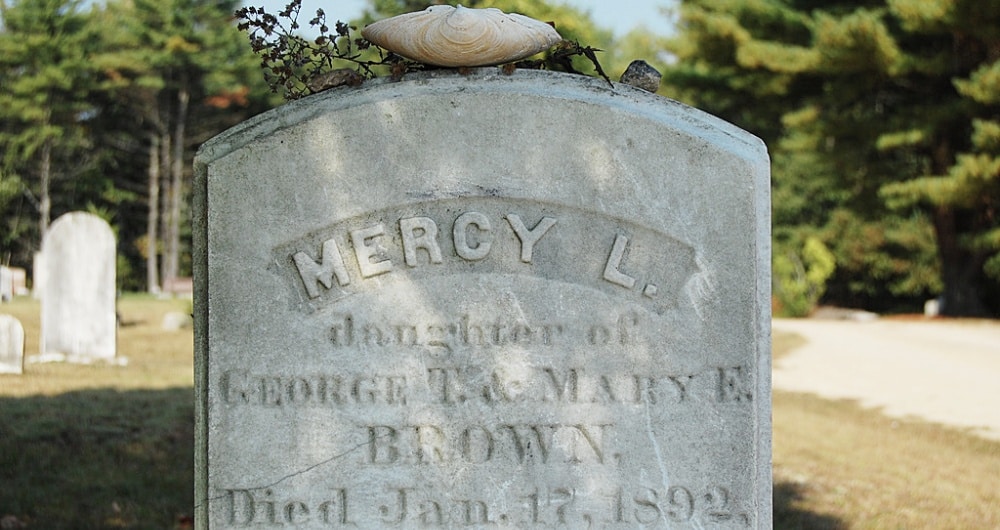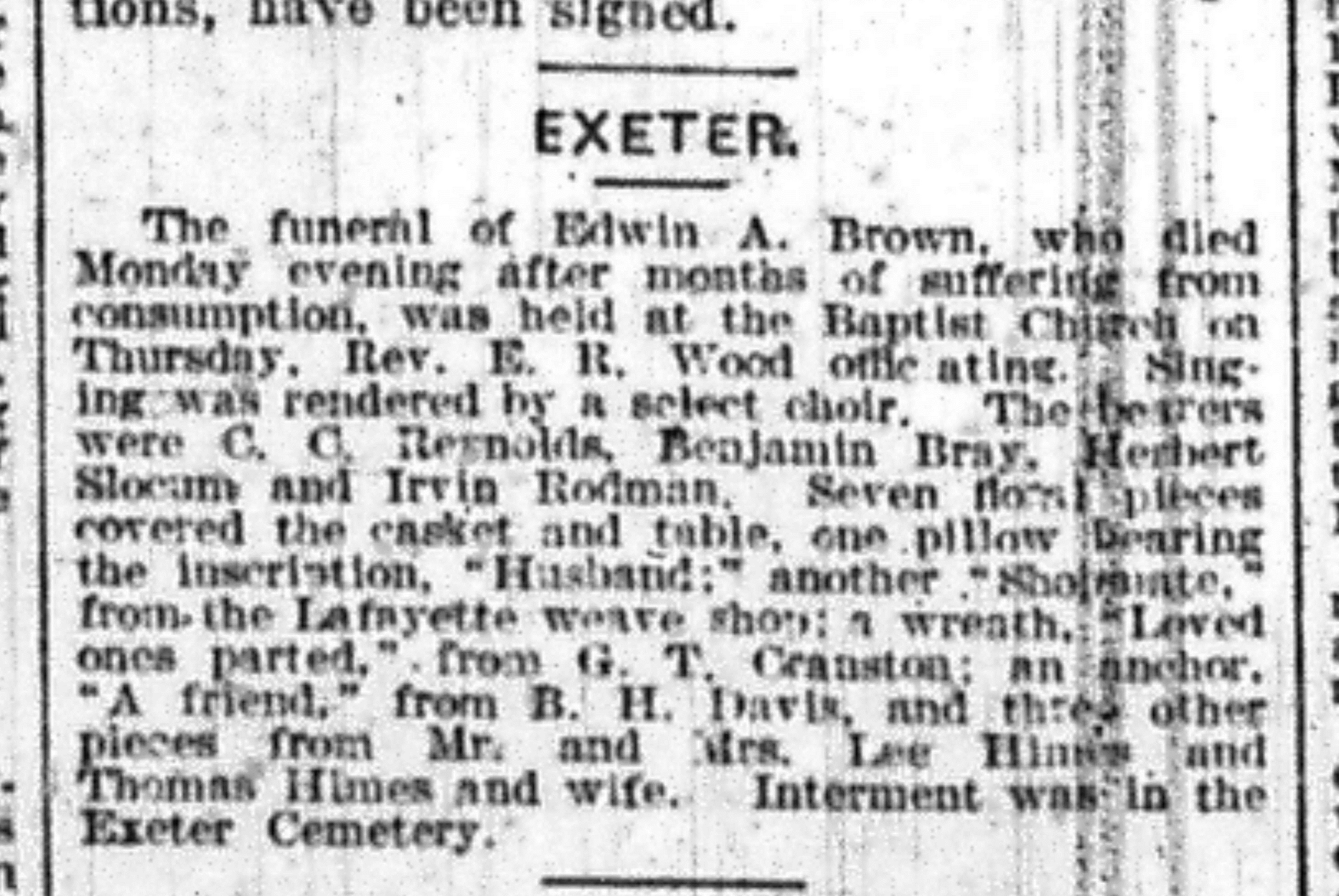Check out this real-life story of suspected vampiric activity in 1890s Rhode Island. Use it for your gaming group’s next campaign, insert it into that spicy Mark Twain fanfic you’ve been workshopping for years, or simply savor an extremely weird tale of American life.
The Suspect: Mercy Lena Brown
The Brown family of Exeter, Rhode Island, were unfortunate people living at an unfortunate time in an unfortunate place. In the early 1890s, Exeter was a hardscrabble town of poor subsistence farmers eking a living from the unforgiving New England soil. The Civil War, the opening of the West, and Gilded Age factories had lured away hundreds in the 1860s, ‘70s, and ‘80s. Farmhouses were empty and fields laid abandoned.
It was as if Exeter was slowly being erased from the map.
The presence of a vicious tuberculosis epidemic only compounded the town’s misery. More commonly known as consumption, tuberculosis was a terrible and incurable disease for nineteenth-century Americans. Victims wasted away over months or years, slowly drained of color, weight, and oxygen.
Tuberculosis is bacterial and quite contagious, particularly for close-knit families like the Browns, who became a heartbreaking example of the shadow this disease cast over society.

First the mother, Mary Eliza, sickened and died, leaving her husband, George, and their three children behind. The oldest child, Mary Olive, contracted the bacterium from her mother and died in 1886. Tuberculosis can hide dormant in the body for years before causing symptoms; the remaining siblings, Mercy Lena (called Lena by her family) and Eddie, began to sicken years later in 1891. Lena Brown died of “galloping consumption” in January 1892, just months after her symptoms first appeared.
The Theory: Vampirism
George Brown must have been gutted by the deaths of his wife, two daughters, and, shortly, the impending death of his only son. But his tribulations were not over yet. Just weeks after Lena’s death, several family friends approached George with an extranormal theory.
They blamed the illness that had claimed his wife, two daughters, and was slowly killing his remaining son, Eddie, not on science but the supernatural. They reasoned that one of the Brown women had turned vampire and was draining Eddie’s life away from beyond the grave.
The Browns’ neighbors were convinced that vampirish activity was afoot. George was skeptical of the theory but his neighbors refused to give up. Finally, he agreed to let a group of local men, under the observation of the Brown family doctor, exhume his wife and daughters’ bodies. They would check the corpses for signs of vampiric activity—“fresh blood” in the heart and organs—and take the necessary steps to stop their attempts to drain the life from Eddie, the remaining Brown child.
Exeter was a small village in a small state, and word of the supposedly supernatural goings-on travelled quickly. Word had gotten to a reporter from the Providence Journal (still in print today and the oldest continuously-published daily newspaper in the country!) and his involvement in the story guaranteed that it would find its way to a large, fascinated, horrified audience of readers.
The Solution: Exhumation & More
The bodies of Mary Eliza, Mary Olive, and Lena were exhumed in March 1892. A group of villagers brought the coffins out of the ground while the family doctor examined each corpse, the Journal’s reporter furiously taking notes all the while. What happened next demonstrates the appeal of any solution, no matter how illogical, in the face of a little-understood disease (something survivors of the COVID19 pandemic understand all too well).
Mary Eliza and Mary Olive, having passed years earlier, were little more than bones. Lena’s body, however, was apparently untouched by death and still had “fresh blood” in the heart. Having died just two months earlier and being laid in an above-ground crypt during a Rhode Island winter are the most likely explanations for Lena’s condition. Her doctor, who performed a graveside autopsy at the urging of George Brown, noted obvious signs of tuberculosis in her lungs as well.
The villagers of Exeter were unconvinced by the doctor’s arguments. Having determined that Lena was the cause of Eddie Brown’s rapidly progressing consumption, they felt they knew what needed to happen next. Lena’s heart and liver were removed, burned on a rock near the crypt, and then given to her brother in a tonic to drink.
They left the Exeter cemetery that day confident that they had stopped a threat of vampirism and potentially saved the life of Eddie Brown. The treatment was ineffective, however; Eddie died of consumption less than two months later and was buried next to the sister whose heart he had consumed in desperation.

So there you have it, folks—a bonafide vampire hunt in Anno Domini 1892. For perspective, here are some other things that happened in 1892: the 400th anniversary of Columbus’s discovery of the New World, tons of movies were made, the second election of Grover Cleveland, the first game of basketball ever played, and the Peugeot Type 4 automobile went into production.
American history—ain’t it grand?

